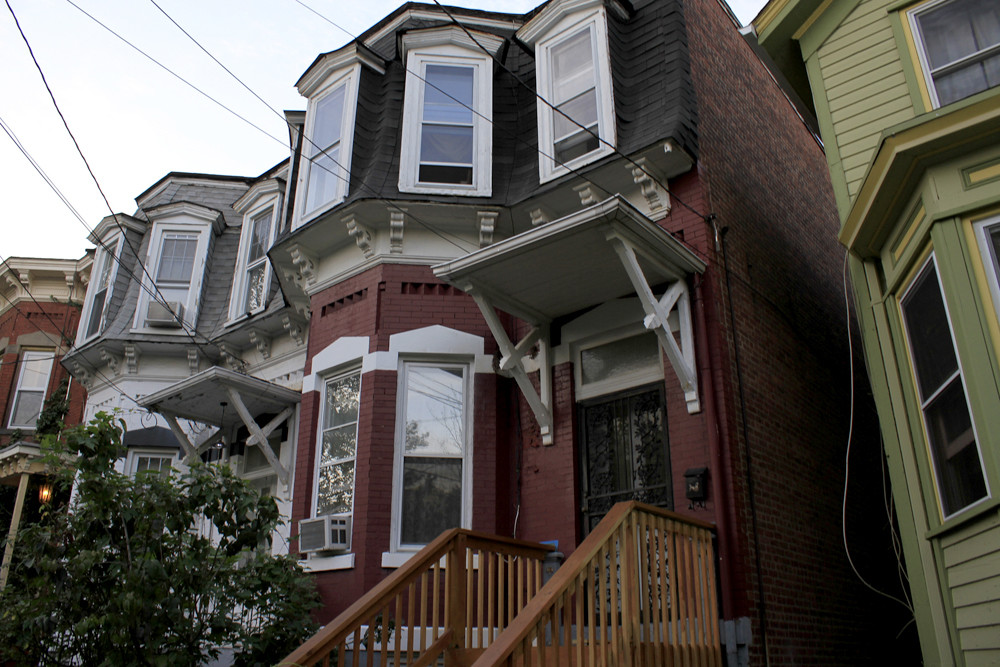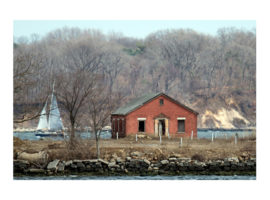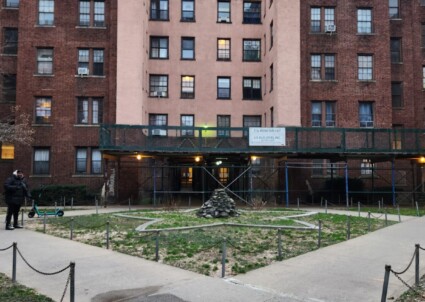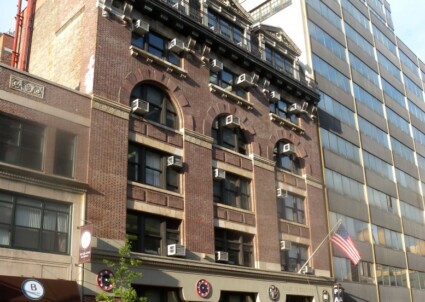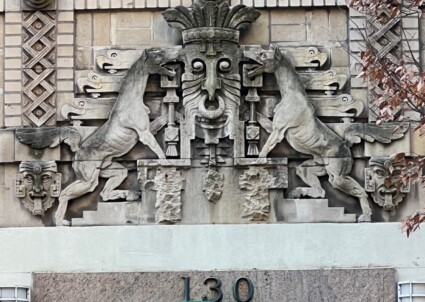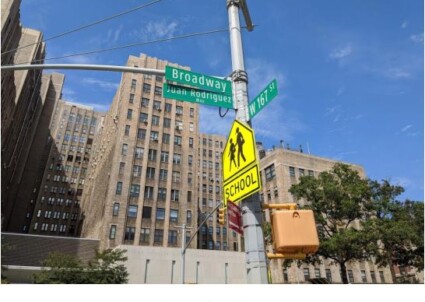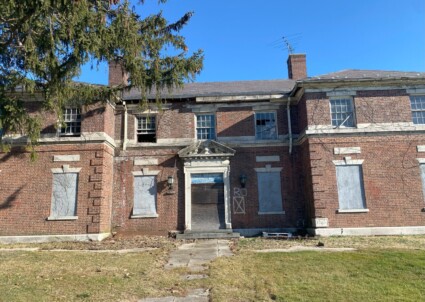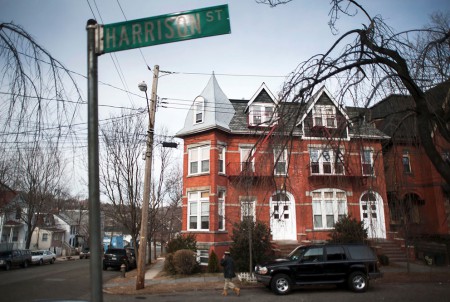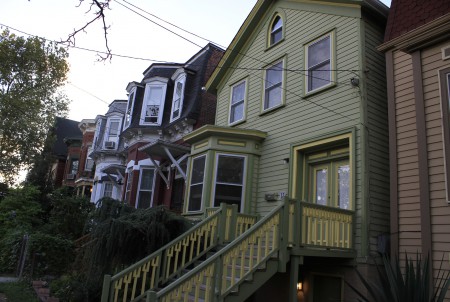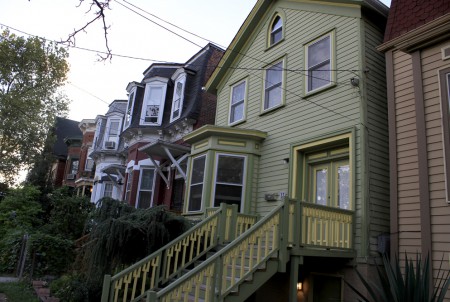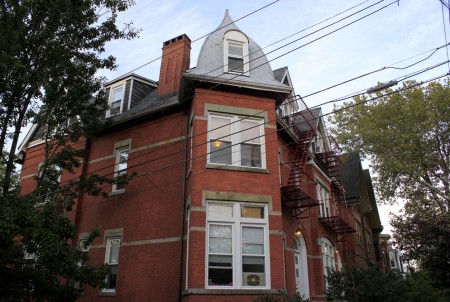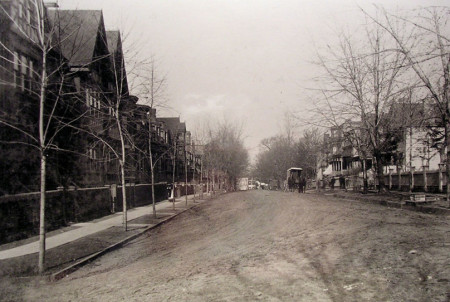Harrison Street, Staten Island
Harrison Street, an enclave of diverse residential architecture, lies within the Stapleton neighborhood of Staten Island. Stapleton was established in 1835 when State Senator Minthorne Tompkins and New York businessman William J. Staples (after whom the neighborhood is named) purchased two farms. In 1836, the men arranged for the establishment of streets and 395 building lots on the large parcel, and that same year several houses and a hotel were constructed. In 1831, the Seaman’s Retreat and Hospital Fund, devoted to the care of merchant sailors, was established on a forty-acre site on Bay Street and Vanderbilt Avenue. Its main building, a large Greek Revival structure built by Abraham Maybie in 1834-53, and the Physician-in-Chief’s Residence of1842 are designated landmarks, though today much of the campus is in disrepair. Staples and Tompkins also founded a steam ferry service to Manhattan to attract development. By the mid- to late-19th century, Stapleton had a thriving commercial district. While some of Harrison Street’s early residents worked in Manhattan, the majority worked in Stapleton as shopkeepers, contractors, developers, carpenters, lawyers and politicians.
Harrison Street, often referred to as “The Nook,” was developed roughly between 1840 and 1900. It was named for Dr. John Talbot Harrison, one-term State Assemblyman and Chief Health Officer of the Quarantine Station in the nearby neighborhood of Tompkinsville, which was developed by Minthorne Tompkins’ father, Daniel D. Tompkins, the United States Vice President under James Monroe. The street is unusual for its densely built 19th century residential architecture, as during this period, much of Staten Island remained farmland or was developed with the suburban ideal in mind. Architectural styles include Colonial Revival, Gothic Revival, Greek Revival, Italianate, Queen Anne and Second Empire. The north side of the street is more uniform in its scale, with a majority of the structures being one-and-one-half story houses. At the west end of the street are two apartment houses constructed in 1883.
The New York City Landmarks Preservation Commission is considering the designation of Harrison Street as Staten Island’s fourth historic district. Nearby, the St. Paul’s Avenue-Stapleton Heights Historic District was designated in 2004, and boasts mansions once belonging to Manhattan-based businessmen and top officials of local breweries. Harrison Street was home to more modest, but no less special, houses belonging to the neighborhood’s merchants and professionals. Thanks to the efforts of dedicated homeowners, many of these houses now rival their neighbors up the hill. It is interesting to compare the architecture of these two neighborhoods in order to put Harrison Street in context. If you are inclined to visit, the St. Paul’s Avenue-Stapleton Heights Historic District is a short distance north of Harrison Street. The district is also marked on the map on the back cover of this brochure.
